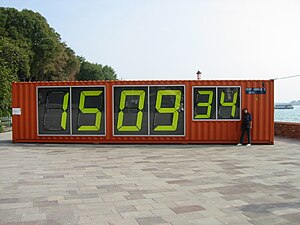Creating Creating sustainable futures/CSF102/Start here
From WikiEducator
Designing the Transition to a Living Future (CSF102) is an open online course. The course materials are hosted on this web site. Learners participate and interact using their own personal learning environments. We will show you how to set these up during the overview session.
5 things you should do before starting the course
- Register on this course site by clicking on the user icon () in the site menu.
This will enable you to submit microblog posts using WEnotes and manage your registered learning journal blog url if you use one. (Note: As an open course, registration is not mandatory and we will post copies of the course announcements on the course site.) - Familiarise yourself with the web site navigation to find out where the:
- Course syllabus,
- Learning materials (see learning pathways in the menu above), and
- Support tutorials (see below) are located.
- Review the:
- Create the accounts you will need for this course (if you don't already have them):
- Forum site on https://forums.oeru.org/c/courses/CSF (optional) if you want to participate in forum discussions or post support FAQs. (Use the drop down Tag list to find discussions for this course.)
- Create a learning journal (this can be a blog or a word processed document - you need to be able to share it with your lecturer if you wish to have formal credit for this course).
- Complete the optional OERu new participant survey.
Study tips
There are a few things you should know about Designing the Transition to a Living Future (CSF102) course:
- Course tag: The course code for Designing the Transition to a Living Future is: CSF102. Write this down because you will use this tag for your blog posts.
- Course feed: The course hosts a live feed where you can monitor posts from WEnotes and participant blog posts using the "CSF102" tag or label.
- WEnotes is the localy hosted microblog technology for posting comments to the course feed.
- Suggested study time: This is an asynchronous course which means you can participate at times which are convenient for your own schedule. The course is divided into 4 pathways spread over two weeks. You should aim to spend approximately 2 hours per day at times which suite your own schedule. However, as an open course you can sip and dip participating in the topics or activities you find interesting. The time you will need to successfully complete the E-activities will vary according to your own experience and previous knowledge sustainable futures. We estimate you will need about 20 hours of study time to complete the course. Learners participating in this course for formal academic credit will need to allocate an additional 20 hours required for completion of the final assignment.
- International time zones: OERu courses typically register students across 24 time zones. You should study this course in your own time zone. For example, carry out the instructions for Tuesday on your Tuesday, not the time zone of your facilitators.
- Using social media technologies: If you are new to using social media technologies, we provide detailed tutorials and instructions to help you set up your own personal learning environment during the orientation session. We recommend that you establish your personal learning environment before the course commences. Blog's are optional and provide a good way to interact with course participants while maintaining control over your own content. You can create a personal course blog or use an existing blog.
- Information overload: At times the aggregated feed can generate a large number of posts. You are not expected to read everything. Read what is current when you log in and follow the links which you find interesting. After a few days you will identify participants with similar interests and you can then follow these posters in the feed.
- Learn by doing and sharing: Most of all, have fun! We are changing the world for the better by returning to the core value of sharing knowledge in education.
